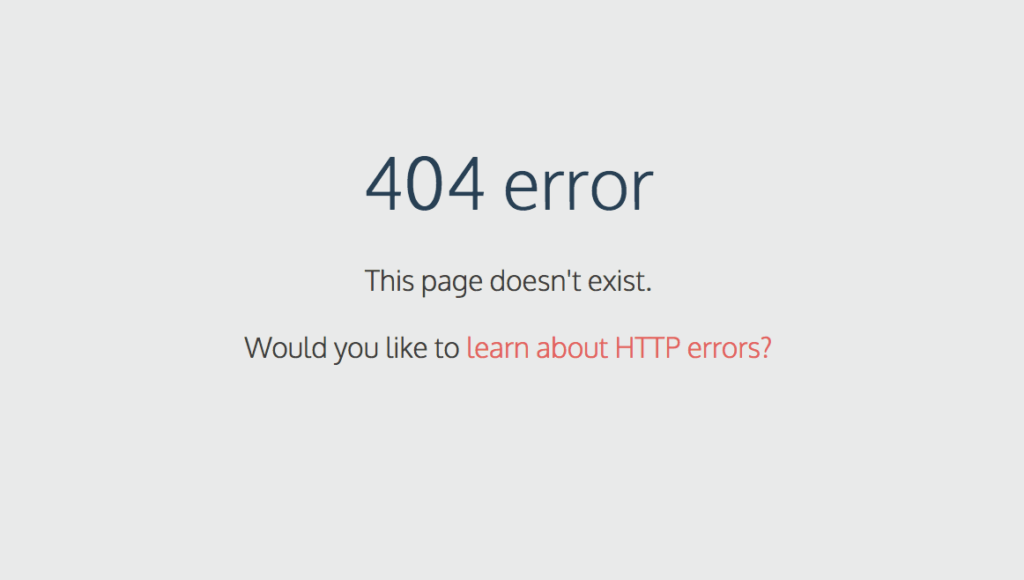Today I’d like to review a topic that I have been thinking about quite a bit lately: Launching new websites. In my experience, September is a popular month for Innkeepers to make big changes to their websites and marketing strategies. Whether you are implementing a new email marketing campaign, upping your social media game, or launching a fresh new website, planning is crucial. In this post, I am going to focus on the complex but important task of transitioning to a new website. Why? Simple: Because I see SO MANY people do it wrong. Launching a new website is a complicated and multi-faceted endeavor. Rather than cover the 100+ tasks to check off during a transition (maybe I’ll write about that in the near future), I want to review the seven most common BIG PICTURE mistakes I see people make during the process.
Before we delve into the mistakes, let’s cover some common misconceptions about launching a new website.
Misconception #1: When I launch my new website, my traffic and direct bookings will automatically go up.
If only it were that easy! Embarking upon a website transition is a truly daunting task. It involves many moving parts and can quickly turn into a true financial disaster if not done right. Because the process is so complex, website transitions are often riddled with errors. If not executed correctly, you may see your organic search rankings plummet and website traffic drop. Dramatic drops in rankings and traffic mean fewer leads and fewer direct bookings. Get the picture? That’s why it is important to work with a trusted AND experienced partner. Aim for someone with years of experience, preferably focused on the hospitality industry, and has an expert understanding of web technologies AND Search Engine Optimization (SEO).
Misconception #2: Launching a new website is way too complicated. I’ll keep what I have.
Some innkeepers realize just how important and complex the process of migrating their website is. Because of this, I think they get a little freaked out about the possibility of things going wrong. They may say something like “That all sounds too complicated. I’ll just keep my website the way it is.” This mindset is almost as dangerous as, “Transitioning my website is easy. I’ll just have my cousin do it.” Websites get dated quickly, best practices change, and technology progresses. I believe websites have a 3-4 year lifespan. So whether you like it or not, it’s in your best interest to embrace change and learn the ins-and-outs of a proper website transition.
7 Common Mistakes When Launching A New Website
The team at Odysys has handled thousands of website builds over the years. We would love to help you out with yours. However, we realize there are many talented people and organizations out there. Whether you hire someone to help or you tackle it internally, keep the following in mind. Here are the 7 most common mistakes I see people make during a website:
Mistake #1: Insufficient Planning
Every website transition needs a clear and detailed game plan. Before you move forward, at a minimum, come up with a detailed list of the following:
- Your Goals: What are you hoping to accomplish?
- Baseline & Measurement: How are you going to measure your current performance and how will you track progress?
- Resources & Responsibilities: What resources do you have at your disposal? Who is responsible for what?
- Timeline: What is a reasonable timeline for transitioning to your new website. Think initial steps to website launch to quality assurance.
- Business Requirements: Your website exists to generate bookings. What are your requirements to achieve this?
- Technical Requirements: What features and functions does your website need to have?
- Costs: What are acceptable costs, both long and short term, for this project?
Mistake #2 : Poor Communication
Lack of communication can completely derail a website transition before it has even begun. From the very moment you decide to redesign your website, you need to maintain open and frequent communication both internally and externally. That means letting everyone on your team know about the transition, even those team members who you think it might not affect. Most importantly, you should also inform any outside partners you might be working with. If you have an outside agency managing your Adwords campaigns or SEO, tell them immediately. This decision affects them as well. In fact, you may want to consult them before you even make the decision.
Mistake #3: Not Understanding the Value of Your Existing Website
Before you do anything, you should take the time to evaluate the performance of your current website from an SEO perspective. Why is this important? Your organic search rankings are tied to your domain name and the individual pages of your website. Your #1 priority when transitioning to a new website is to maintain and improve those rankings. So, start out by understanding the value of your current website.
There are several ways to do this and several tools available. One of our favorites is Screaming Frog. Screaming Frog crawls your current website pages and reports key onsite and site-wide data to help you better analyze your SEO. Data you will want to review include the following:
- Total number of crawlable pages.
- Current title tags
- Current meta descriptions
- Internal links
- 404 errors (pages not found) to be fixed when transitioning to your new website.
Why is all of this so important? To maintain the value of your website during a transition. You will want to ensure that your current pages are redirected correctly to your new pages. You may want to maintain your current title tags and meta descriptions. And you will want to fix any 404 errors once your website goes live. There is significantly more tasks that go into this phase, however, I do want to stress the importance of redirecting your old pages to your new pages:
To map your old pages to your new pages, create a spreadsheet that shows old page URLs in one column and the corresponding new page URL in the next. Remember: every page on your old site should have a corresponding page on your new. If it doesn’t, people are going to be redirected to those annoying 404 pages. Not only are 404 pages annoying but they are also a quality signal for the search engines? If you have a significant amount of 404 errors that may indicated that your website is broken or simply not maintained correctly. This, in turn, may indicate a poor user experience.

Mistake #4: Ignoring Your Current Stats
Similar to #3, you need to know how well your website is performing and how much you want to improve post-transition. Benchmark your current stats so you know how well your website is currently performing. That way you can monitor important metrics through every step of the transition. In the end, it will help you gage just how successful the transition was.
There are two primary data sources for reviewing metrics pre and post launch: Google Analytics and Google Search Console. The following is a handful of stats to record:
- Web traffic
- Traffic sources
- Quality of your traffic
- Pages indexed by Google
- Google cache date
- Crawl errors
Mistake #5: Not Making SEO THE Priority
Succinctly, SEO can be broken down into 3 parts:
- Site-Wide SEO: The way your website is built, how fast it is, and how crawlable it is.
- On-Page SEO: The content of your website including copy, images, and video. Internal linking and semantic markup.
- Off-Page SEO: Link building, local search, and PR.
Each of these items should be THE #1 priority during a website transition. Looking for more specific? Head to our website for a variety of blog posts, free resources, and webinars about improving and managing your SEO.
Mistake #6: Not Tracking Your Performance Closely After You Launch
Once your website is launched, you will want to monitor it closely for several months to ensure that it is performing well and the transition has improved your traffic and rankings. Congratulate yourself once the transition is complete, but remember: your work isn’t over. You still need to regularly review Google Analytics and Google Search Console.
Mistake #7: Not Communicating Launch Externally
Launching a new website is a big deal. Make sure you communicate the launch with your customers, partners, and whoever else you might be working with. Partners are particularly important. As I mentioned above, if you are using a 3rd party for Adwords management, or email marketing, or even content creation, PLEASE PLEASE PLEASE let them know before you launch and right after. I have seen dozens of advertising campaigns tank simply because an Innkeeper didn’t notify partners about a major website change.
Got it?
A website transition should be an exciting thing. Don’t let it turn into some stressful, infuriating mess just because you weren’t sure how to do it right. By avoiding these 7 common mistakes, you can ensure that your website transition is a smooth and worry-free success.

